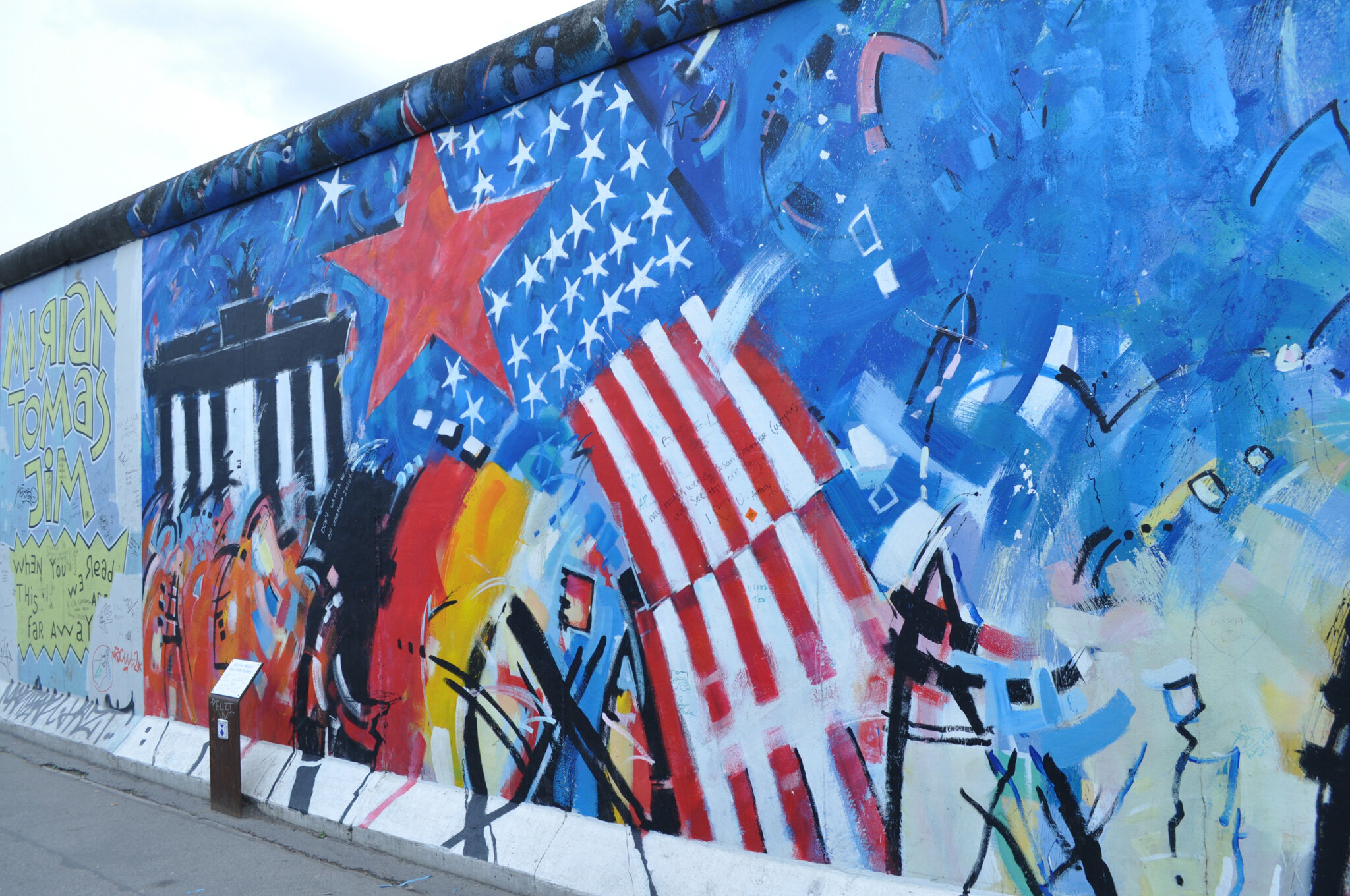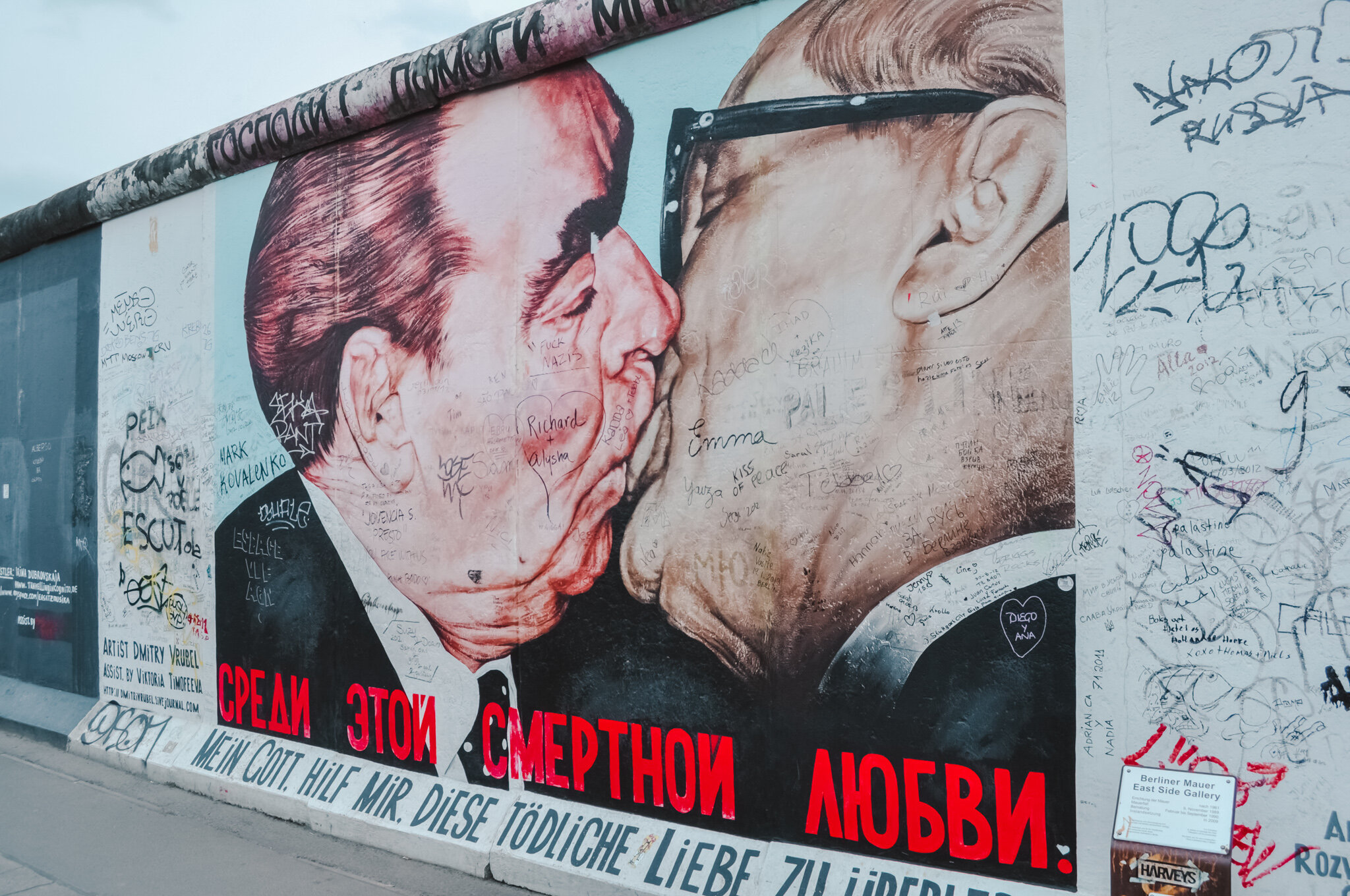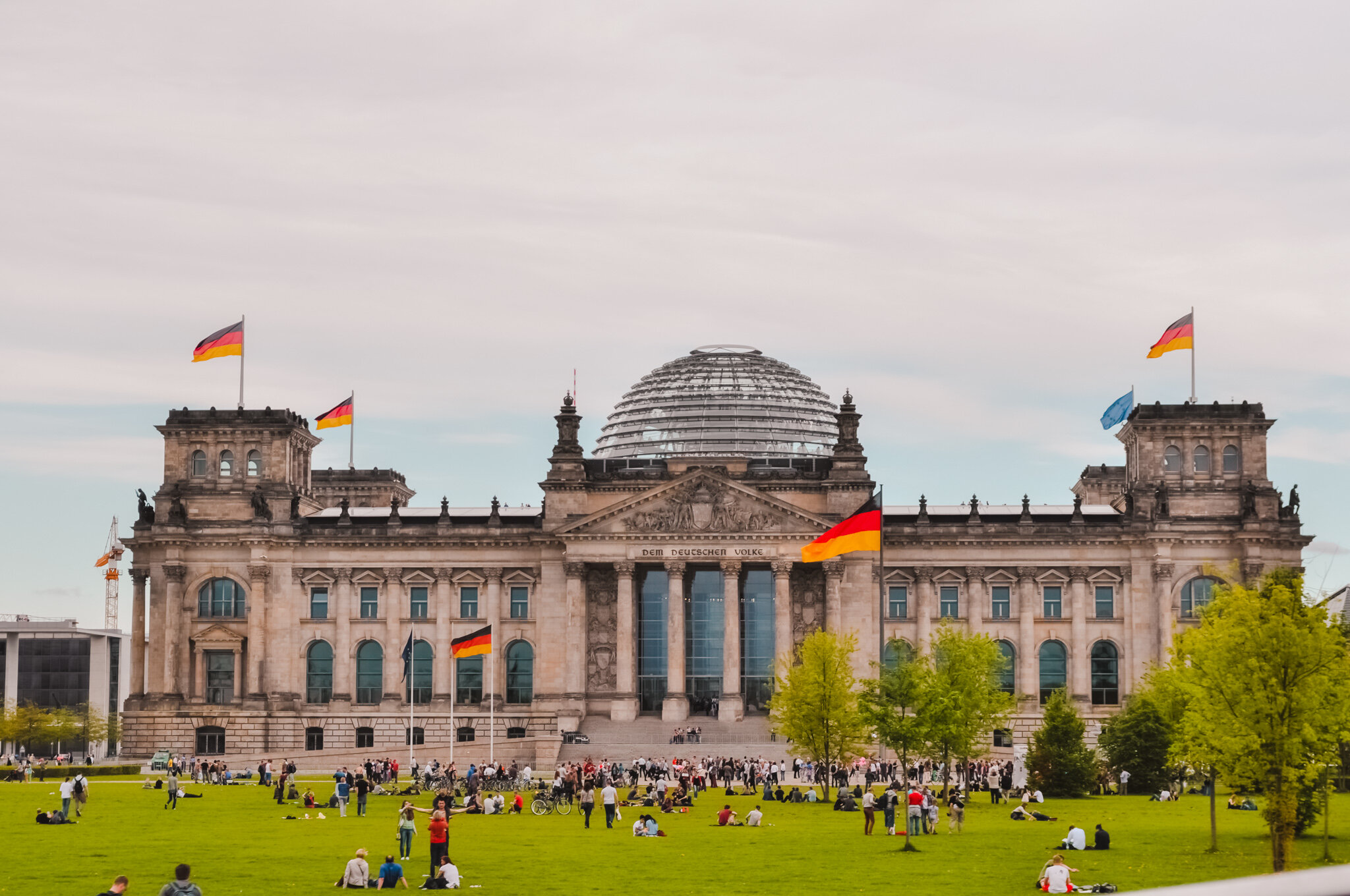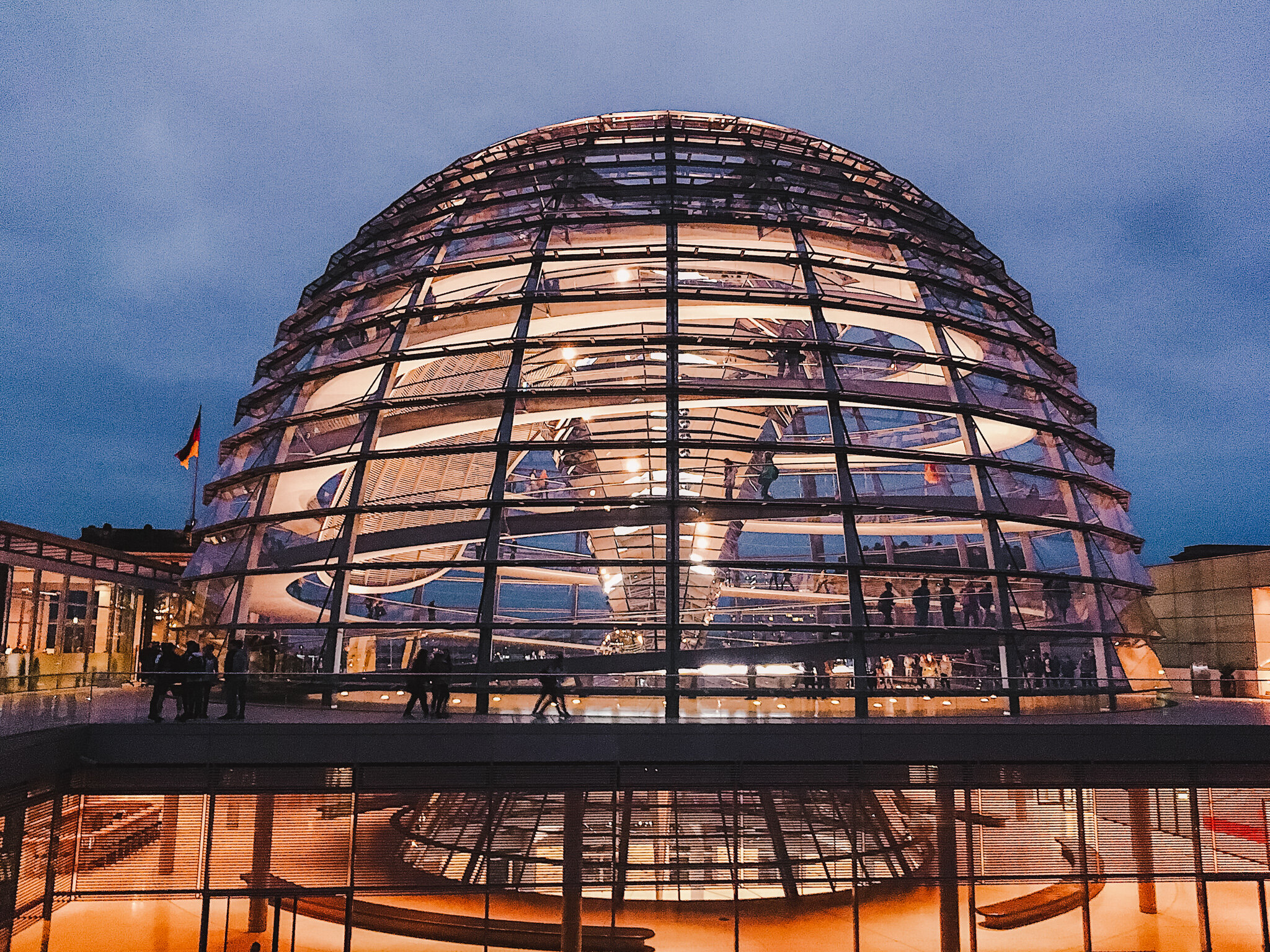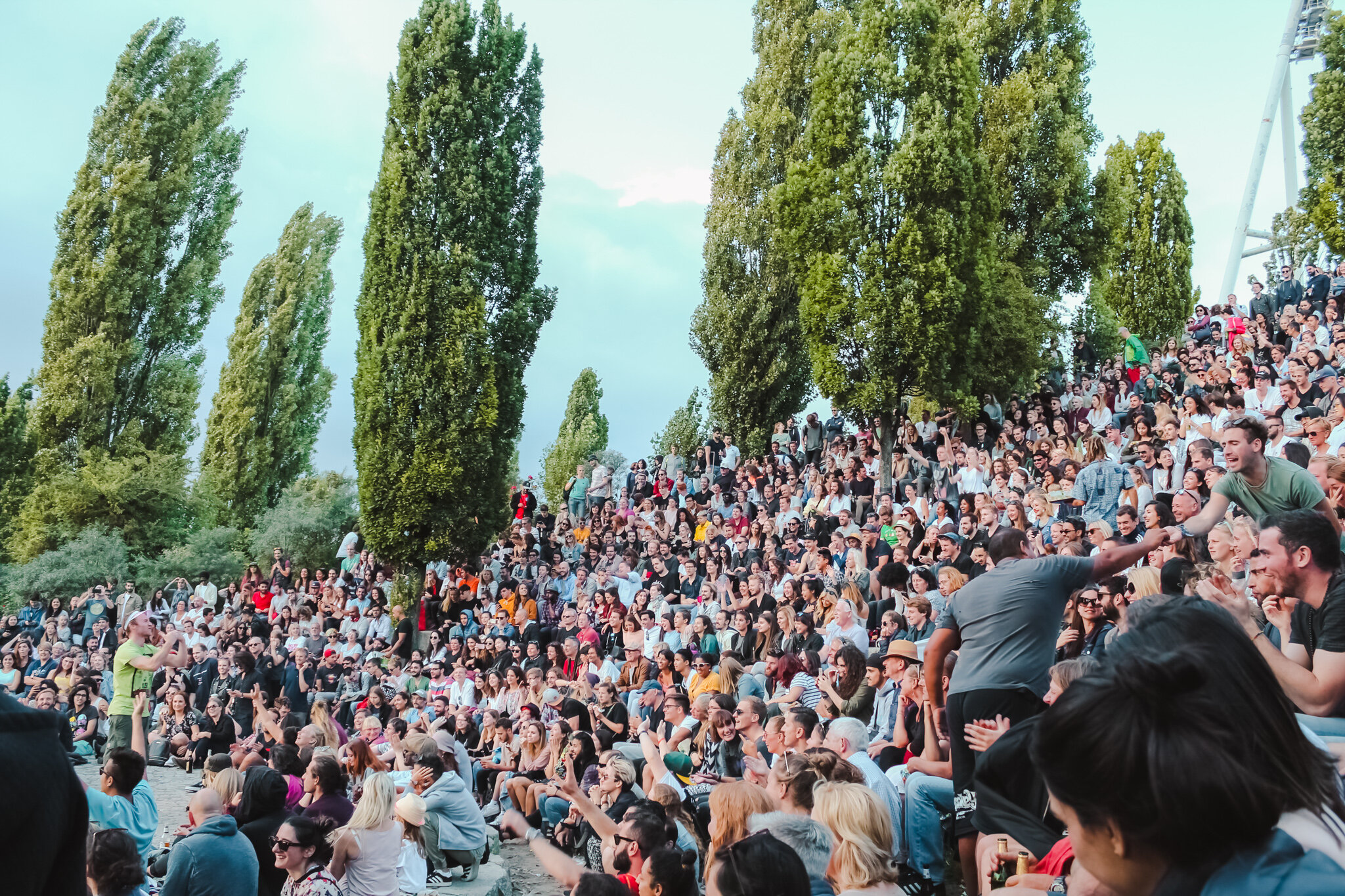Berlin has the reputation of being cheap. After all, the city’s slogan is ‘poor but sexy’. Given the city’s history, this is probably not surprising. Berlin was a divided city in the middle of East Germany - meaning part of Berlin belonged to West Germany, but you had to drive through East Germany to get there. Being surrounded by a big wall on all sides didn’t particularly make the city very attractive - thus it was cheap and attracted artists and all sorts of alternative folks. While this has definitely changed (today, Berlin is one of Europe’s hot spots), it is still comparably cheap and there are tons of things you can do for free.
East Side Gallery
The East Side Gallery in Berlin isn’t your average gallery. What used to be the Berlin Wall, is now the largest open air gallery in the world. In total, the gallery is 1.3 km long and is located right next to the banks of the Spree in Friedrichshain. It is also the longest continuous section of the Berlin Wall that is still in existence. It is not just impressive to walk along the Wall, thinking how it must have been like, living in a divided country. The wall is also painted with pictures from artists form around the world, some of them quite famous such as the Fraternal Kiss by Dimitri Vrubel. Other than the East Side Gallery, you can also pay the Mercedes Benz Arena a visit and stroll across the Oberbaumbrücke nearby.
Memorial To The Murdered Jews Of Europe
The Holocaust Memorial was only opened in 2005 and was designed by New York architect Peter Eisenmann. It is closely located to the Brandenburg Gate in the centre of Berlin. You can book guided tours for a charge but you can also visit the memorial as well as the information centre free of charge. The memorial consists of 2711 concrete slabs of different heights and you can simply walk between them on every hour of the day or night. I quite like this memorial as it is very unusual, but the architectural design gives you a felling of uncertainty. While just walking along the concrete slabs is a unique experience, I also recommend visiting the underground information center.
Brandenburg Gate
Right next to the Holocaust Memorial is the Brandenburg Gate, Berlin’s most famous landmark. It was built in 1788 inspired by the Acropolis in Athens and was supposed to give a statement to the adjacent boulevard Unter den Linden. In the early 19th century, the Quadriga, the sculpture on top of the gate, was held captive in France by Napoleon. The Gate was damaged during WWII but not fully destroyed. Since the Brandenburg Gate was located in the “death strip” that separated East from West Berlin, it is now a symbol for unity. Ronald Regan delivered his famous speech in 1987 asking Mr. Gorbachov to “tear down this wall!”
Reichstag
The Reichstag is the current home of the German parliament. The building itself is actually modelled after the Memorial Hall in Philadelphia and was built in 1894. The dedication “Dem Deutschen Volke” on the building translates to “The German People”. The Reichstag has historically only been home to the parliament until 1933, when it was damaged in a fire. Badly damaged during WWII and being a target for the Red Army due to the propaganda value, the German parliament is relocated to Bonn. After undergoing restorations, serving as an exhibition and ceremonial venue, the German parliament moved back into the Reichstag in 1991. The building now also features a glass cupola right above the debating chamber. A mirrored cone in the centre of the cupola reflects light into the Reichstag and increases energy efficiency. Visitors can also get a view of the parliamentary proceedings below. You can still check out the Cyrillic graffiti left by Soviet Soldiers after their siege in 1945. The glass in from of the Reichstag is a popular spot for picnics and sunbathing.
Explore the neighborhoods and flea markets
Walking around and exploring different neighbourhoods is always free, but it is definitely worth it in Berlin. Every neighborhood has its own little highlights and I definitely recommend to check out some flea and weekend markets if you can. Some of my favourites are the Mauerpark Flea Market, the Flea Market at Arkonaplatz and the Fesche Lotte Flea Market. If you are in for the foodie sight of things, I can recommend the weekend market at Kollwitzplatz and the Neuköllner Wochemärkte.
Mauerpark karaoke
The Mauerpark is a park located in the North of Berlin near Gesundbrunnen and definitely worth a visit on a sunny Sunday. Not just because it is a nice place to hang out and enjoy a nice barbeque. Every Sunday there is a big flea market and live bands. The main attraction however, is the Bearpit Karaoke at 3pm. Joe Hatchiban carries his barely powered speakers into the amphitheatre of the park giving thousands of people the possibility to sing karaoke in the park in front of hundreds of strangers. And while singing karaoke in a park in the middle of Berlin isn’t just amazing enough, the atmosphere will surely convince you. Artist are young and old, male and female, talented and funny and I dare to say you won’t be able to hear a single “boo” from the audience. Check out Bearpit Karaoke website for more information!
Enjoy the street art
You will find tons of street art in Berlin. Since the city is very walkable and very safe, grab your bike or your legs, just stroll around and marvel at the street art (if the weather isn’t too bad that is). Famous examples of Berlin steer art are Victor Bosh’s Cosmonaut in Kreuzberg, El Bocho’s Little Lucy, or JImmy C’s Anne Frank portrait at Rosenthaler Strasse.
Berlin Wall Memorial
Yes, you should definitely check out the East Side Gallery while you are in Berlin and it will definitely give you a good impression on what it was like to live in a divided city. But definitely also pay the Berlin Wall Memorial a visit while you are there. Although located in Prenzlauer Berg, further away from the usual tourist attractions, it is definitely Wirth a visit. The monument is located on Bernauer Straße and is essentially a 60 meter section of the former border - not just the Berlin Wall itself, but the entire “death strip”. There is also a visitor centre you can check out free of charge.
Checkpoint Charlie
Checkpoint Charlie got its name from the NATO phonetic alphabet (Alpha, Bravo, Charlie), and used to be a border crossing operated by the Allies in and around Berlin. It is located on the corner of Friedrichstrasse and Zimmerstrasse and is still a reminder of the former border crossing between East and West. Checkpoint Charlie became famous after a tank confrontation between American and Soviet tanks in 1961. Also, several attempts to escape form East Berlin were made. Although it was featured in several movies and spy novels (James Bond, The Spy Who Came In From The Cold), I fin the site slightly underwhelming. Since it’s free of charge, you should definitely pay it a visit though!
Have you been to Berlin and did any of the things on this list?
Kate recommends: The Book Thief is a historical novel by Markus Zusak. The book was published in 2005 and has since been translated into 63 languages and eas even adapted into a movie in 2013. The plot is set in Nazi Germany in 1939, when the protagonist Liesl finds a copy of The Gravedigger’s Handbook on a graveyard. She begins developing a love for books, stealing books from Nazi book-burnings and the library. As Berlin is a city with a lot of history, there is nothing like bringing a book that sets you back in time.


